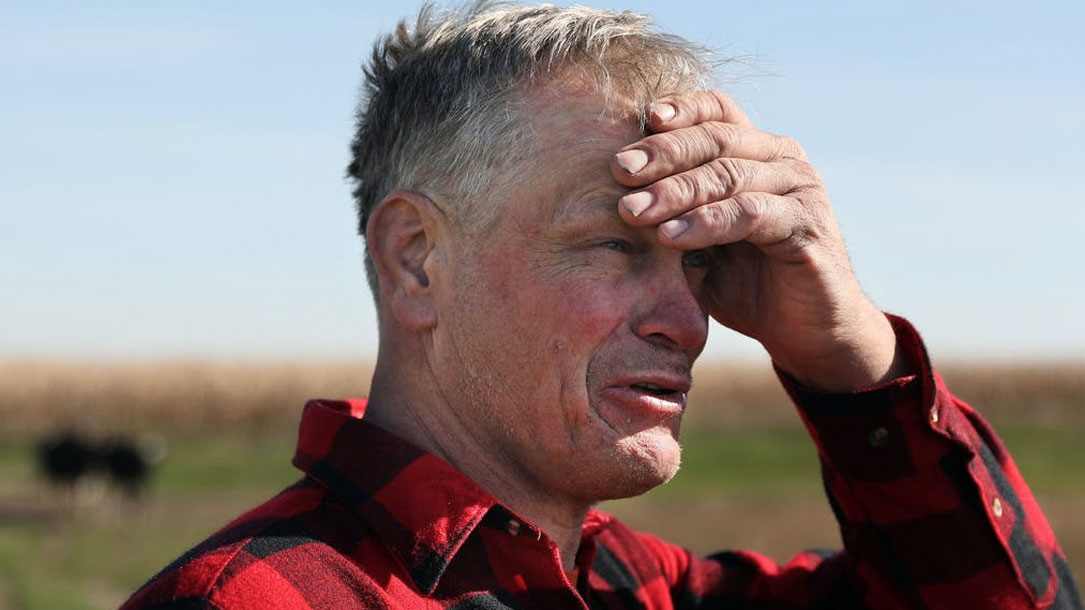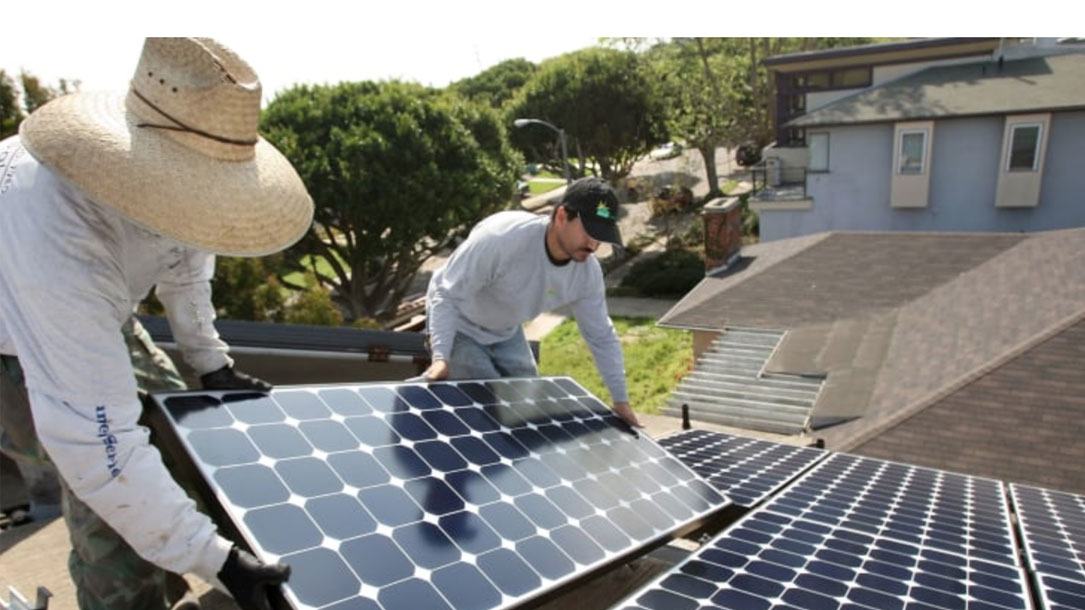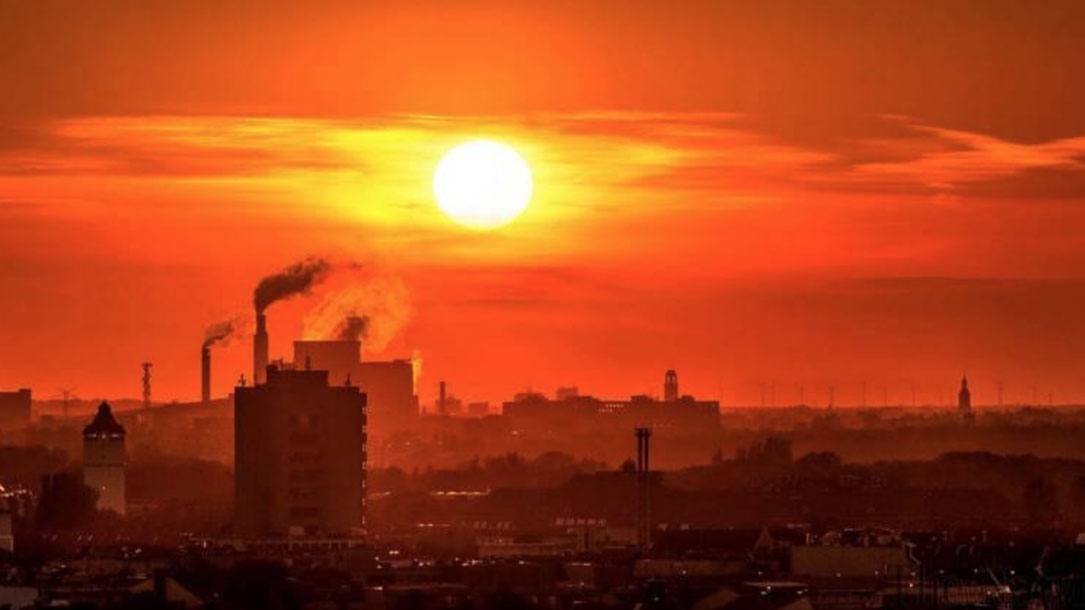Home > Climate News >

Five reasons farmers love wind & solar
If we are going to reduce coal, oil, and natural gas — to save thousands of species from extinction and avoid significant agricultural damage and loss due to extreme weather – plus find ways to make family farms viable in a changing climate, we are going to have to rethink how solar and wind are compatible with our conservation and community goals.
Check out five reasons why farmers often embrace wind and solar. Land trusts can help communities understand that the alternative to gearing towards renewables is often going out of business, selling for development, and family economic stress.

Mental health issues cropping up as financial stress continues on farms
“Organic dairy farmer Kevin Stuedemann knows how it feels to be on the verge of calling it quits.
After several producers in his area went out of business, Stuedemann’s milk buyer ended its contract with him on 30 days’ notice because there were no longer enough organic dairies nearby to justify sending a truck. With 70 cows producing milk, no customers and zero income, Stuedemann searched frantically for a new buyer and took an off-farm job to make ends meet…”

Americans want more clean energy. Here’s what they’re actually willing to do to get it
Americans have long supported the idea of clean power. The question has always been how much effort they’re willing to expend to make a green energy future a reality.
A new survey from global auditing and consulting firm Deloitte suggests the gap between environmental concern and consumer action may be shrinking. The pillars helping to bridge the divide include falling prices for solar power, higher awareness of clean energy options, growing concern about climate change and the inclinations of millennials.

Republicans embracing climate change
Young Republicans, reformed lobbyists, and green Tea Partiers: Meet America’s “eco-right.”
Tanner’s nonprofit, Conservation Hawks, is part of a coalition of grassroots organizations trying to pull conservatives into the conversation about rising temperatures.
And it’s starting to work. There’s a small but growing alliance of concerned conservatives who want to reclaim climate change as a nonpartisan issue. This motley crew of lobbyists, Evangelical Christians, and far-right radicals call themselves the “eco-right.”

Yale Climate Opinion Maps 2018
These maps show how Americans’ climate change beliefs, risk perceptions, and policy support vary at the state, congressional district, metro area, and county levels. Please see the most recent version of these maps here.

A new study shows that more Utahns are discussing climate change
Researchers have produced a new interactive Climate Opinion Map that allows users to see people’s climate change opinions across the U.S.
“What’s great about it is it’s relevant to anybody in any community across the country,” said Peter Howe, assistant professor of human-environment geography at Utah State University. “You know we make these numbers available all the way down to the county level.”

The most important thing you can do to fight global warming: End the climate “spiral of silence.”
Americans rarely talk about climate change—and they rarely hear about it in the media—a major new survey finds. But that silence reinforces the dangerously wrong notion that climate change isn’t an existential threat requiring urgent action.
There is good news. Land trusts are starting to help their supporters, and their communities, realize that the lands and waters they love are at stake—and that land conservation, while part of the solution, won’t be enough. I think you’ll appreciate the science to this changing approach…

Making photography tell the stories: If we lose the ice, we lose the entire ecosystem’
You, like Paul, a former marine biologist, can inspire change and help people connect the dots in compelling ways as we face 30 years to slow down climate change in a way that will save the species we love, and the communities as we know them. Why? Because, as Paul notes…

A dozen artistic responses to one of the greatest threats of our time
Human-induced climate change, which certain politicians deny and many of us choose to ignore, threatens the survival of every species on Earth…

Planting a mix of tree species ‘could double’ forest carbon storage
The new study, published in the Proceedings of the Royal Society of London B, looks at one such question – “How could the number of tree species present in a forest affect its ability to store carbon?”
The results show that the most diverse forests are “faster” at storing carbon, says study co-author Professor Bernhard Schmid, a plant biologist from the University of Zurich.
“With increased species richness, more carbon is stored both above and below ground – in trunks, roots, deadwood, mould and soil. You can roughly say that a diverse forest stores twice the amount of carbon as the average monoculture.”












